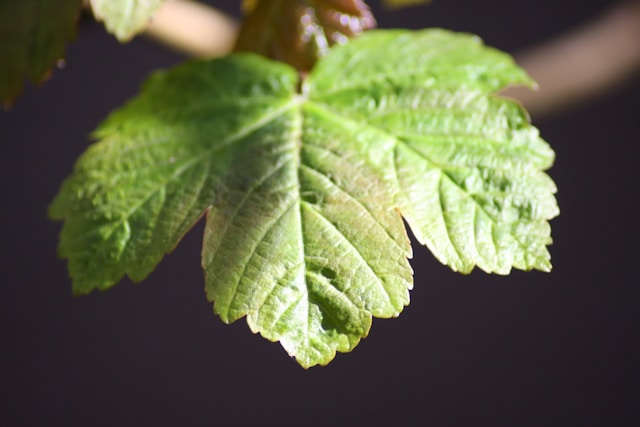Oak trees are known for being solid, strong and dependable, but they’re still susceptible to certain diseases. Oak leaf blister is one that needs to be understood, so you can mitigate the problem as soon as it appears.
Understanding Oak Leaf Blister
Also known as oak leaf curl, oak leaf blister is a fungal disease that causes raised areas on the leaves of oak trees. Red oak trees are especially susceptible to the disease, but most oak trees are vulnerable. If a tree is infected with oak leaf blister and the environment is right, it may lose its leaves before fall arrives.
Identifying Oak Leaf Blister
Oak leaf blister appears as blister-like raised or depressed spots on the tops of leaves. The bottom of the leaves may turn gray, while the tops of the blisters may turn yellow and eventually, brown. The fungus usually only affects young leaves.
Causes and Contributing Factors
Oak leaf blister is a fungal disease. Spores spread in mid-spring through the wind and splashing raindrops onto buds and twigs. The fungus remains dormant until the following spring when cool, wet weather allows spores to germinate and the fungus to spread.
Impact on Oak Trees and Prevention Strategies
Although unsightly, oak leaf blister usually does not impact the health of the tree. Mature leaves are not generally susceptible to the fungus, and once young leaves fall, the tree can continue to grow healthy and strong.
Water your tree frequently, especially during seasons of drought. Fertilize appropriately and prune when needed. A healthy oak tree is far less susceptible to diseases and infestations.
Early Detection Techniques and Treatment Options
Oak leaf blister is easy to spot in the springtime as new leaves begin to grow. The large blisters may look alarming, but affected leaves will soon fall and the tree will be just fine. In cases where leaf drop occurs early in the season, your oak tree may grow new foliage before autumn begins.
Treatment options include regular tree maintenance and close observation. If necessary, your arborist may choose to apply a fungicide to the tree in the spring, when the buds are beginning to develop.
Hiring Professional Help
Professional arborists are tree experts who know how to identify and treat a variety of fungal diseases and infestations. If your trees seem weak or unhealthy, it’s always best to consult the pros. We can identify the problem and treat it quickly to avoid further deterioration of the tree and avoid the spread of disease. If you’d like to learn more about common tree disease or you’d like to schedule an inspection, contact us at American Arbor Care today.
Frequently Asked Questions (FAQs)
What causes Oak Leaf Blister?
Oak leaf blister is caused by the fungus Taphrina caerulescens.
How can I identify Oak Leaf Blister on my Oak tree?
Oak leaf blister is easy to spot by the raised and depressed spots on young leaves that develop in early spring.
Are all Oak trees susceptible to Oak Leaf Blister?
Yes, all oak trees are susceptible to the disease, and red oak trees are especially vulnerable to this fungus.
What is the best time to apply fungicides for Oak Leaf Blister?
The best time to apply fungicides for oak leaf blister is in the early spring, as buds begin to appear.
Can Oak Leaf Blister be treated without chemicals?
Yes, oak leaf blister can typically run its course without the need for fungicides, but not always. In severe cases, a fungicide may be necessary to protect the tree.
Are there preventive measures to avoid Oak Leaf Blister?
The best way to prevent oak leaf blister is by keeping your tree in good health. Water it frequently, apply fertilizer as needed, and prune away dead branches when necessary.
What should I do if my Oak tree is already severely affected?
Call your local arborist. They’ll be able to address the problem quickly to save your tree.
Are there signs of resistance in certain Oak varieties?
Mature leaves are resistant to oak leaf blister, but all oak trees are vulnerable to the disease.
How often should I inspect my Oak trees for symptoms?
Check your oak trees in early spring, as new leaves begin to grow.
Can Oak Leaf Blister spread to other trees in the vicinity?
Yes, oak leaf blister can spread through raindrops and wind.
Are there community initiatives for Oak tree health?
There are plenty of initiatives for tree health. Your local arborist can provide you with the best resources.

